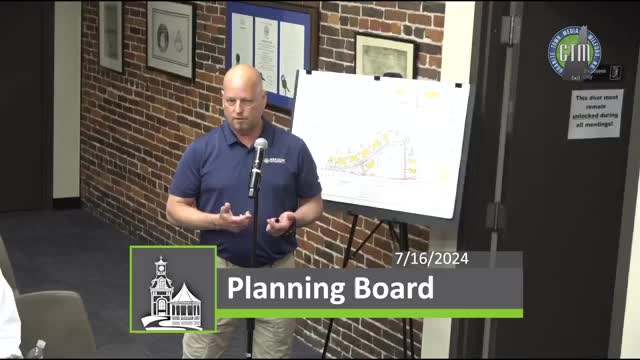Town debates costly sidewalk upgrades amid legal complexities
July 16, 2024 | Milford Boards & Committees of Selectmen, Milford, Hillsborough County, New Hampshire

This article was created by AI summarizing key points discussed. AI makes mistakes, so for full details and context, please refer to the video of the full meeting. Please report any errors so we can fix them. Report an error »

During a recent government meeting, discussions centered on the contentious issue of sidewalk improvements in a local development project. The meeting highlighted the complexities surrounding the proposed upgrades, with officials weighing the best options against financial constraints.
Ken, a representative from the town, emphasized that while a full sidewalk with vertical curbs and new drainage is the ideal solution, it is also the most expensive. He presented three alternative options for consideration, acknowledging the need for a balance between cost and community benefit.
Jim Callahan, an attorney representing the development, reiterated the legal framework governing such improvements. He pointed out that New Hampshire law allows boards to impose conditions for off-site improvements, but these must be reasonable and proportionate. Callahan argued that the staff's recommendations for sidewalk enhancements could be seen as an overreach, suggesting that the proposed financial contributions may not align with the actual benefits conferred by the development.
The applicant has offered a $15,000 contribution towards sidewalk improvements, which sparked a discussion about the feasibility of this amount in relation to the overall costs of construction. Estimates indicated that the cost per linear foot for the proposed pathways could exceed the offered contribution, raising concerns about the project's financial viability.
The conversation also touched on the potential need for easements from neighboring property owners, which could complicate the development process further. The board was tasked with evaluating the three options presented by the applicant, weighing the financial implications against the community's needs for improved pedestrian infrastructure.
As the meeting concluded, it became clear that the decision on how to proceed with the sidewalk improvements would require careful consideration of both legal precedents and the financial realities facing the development. The board's next steps will be crucial in determining the future of pedestrian access in the area.
Ken, a representative from the town, emphasized that while a full sidewalk with vertical curbs and new drainage is the ideal solution, it is also the most expensive. He presented three alternative options for consideration, acknowledging the need for a balance between cost and community benefit.
Jim Callahan, an attorney representing the development, reiterated the legal framework governing such improvements. He pointed out that New Hampshire law allows boards to impose conditions for off-site improvements, but these must be reasonable and proportionate. Callahan argued that the staff's recommendations for sidewalk enhancements could be seen as an overreach, suggesting that the proposed financial contributions may not align with the actual benefits conferred by the development.
The applicant has offered a $15,000 contribution towards sidewalk improvements, which sparked a discussion about the feasibility of this amount in relation to the overall costs of construction. Estimates indicated that the cost per linear foot for the proposed pathways could exceed the offered contribution, raising concerns about the project's financial viability.
The conversation also touched on the potential need for easements from neighboring property owners, which could complicate the development process further. The board was tasked with evaluating the three options presented by the applicant, weighing the financial implications against the community's needs for improved pedestrian infrastructure.
As the meeting concluded, it became clear that the decision on how to proceed with the sidewalk improvements would require careful consideration of both legal precedents and the financial realities facing the development. The board's next steps will be crucial in determining the future of pedestrian access in the area.
View full meeting
This article is based on a recent meeting—watch the full video and explore the complete transcript for deeper insights into the discussion.
View full meeting
